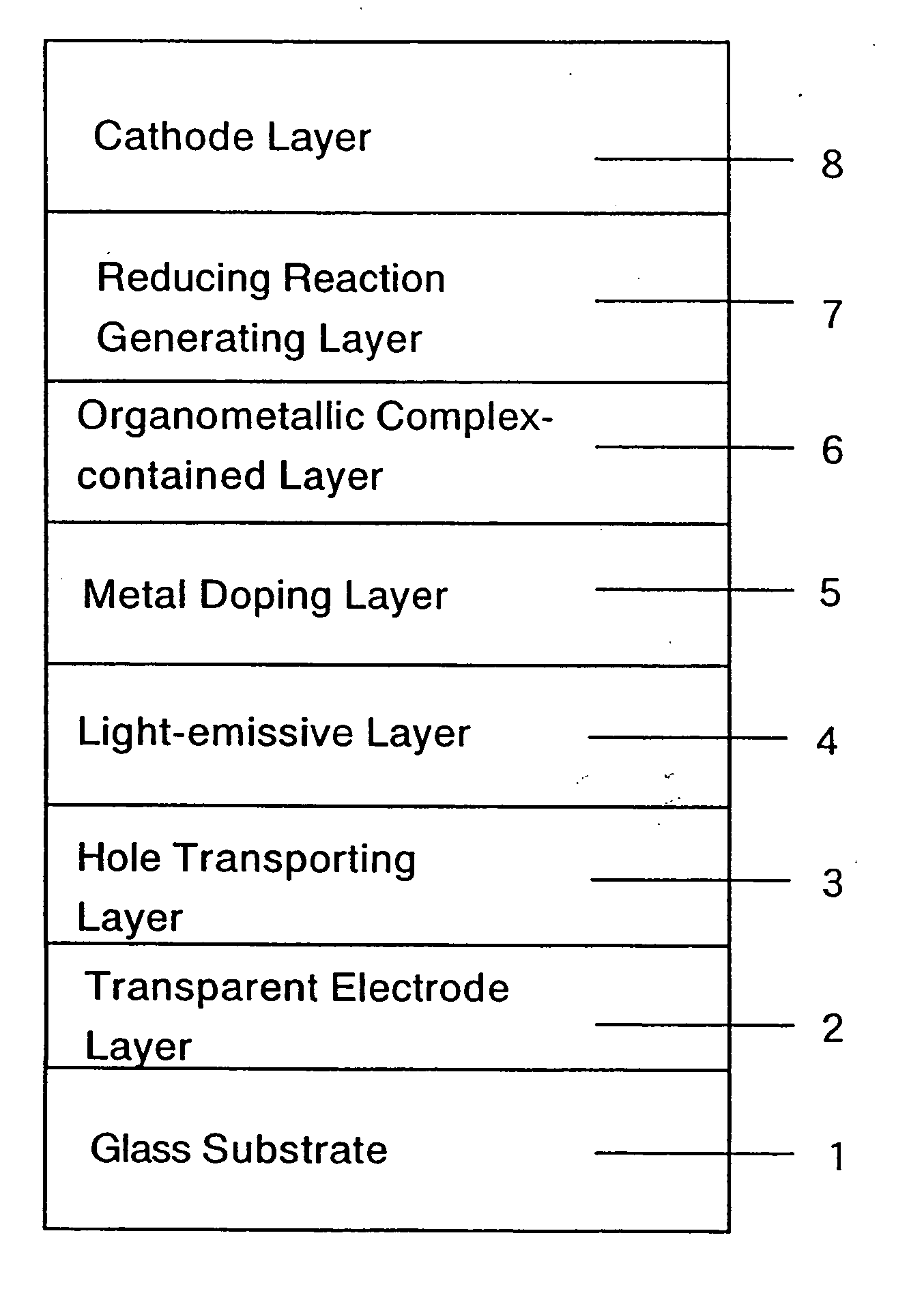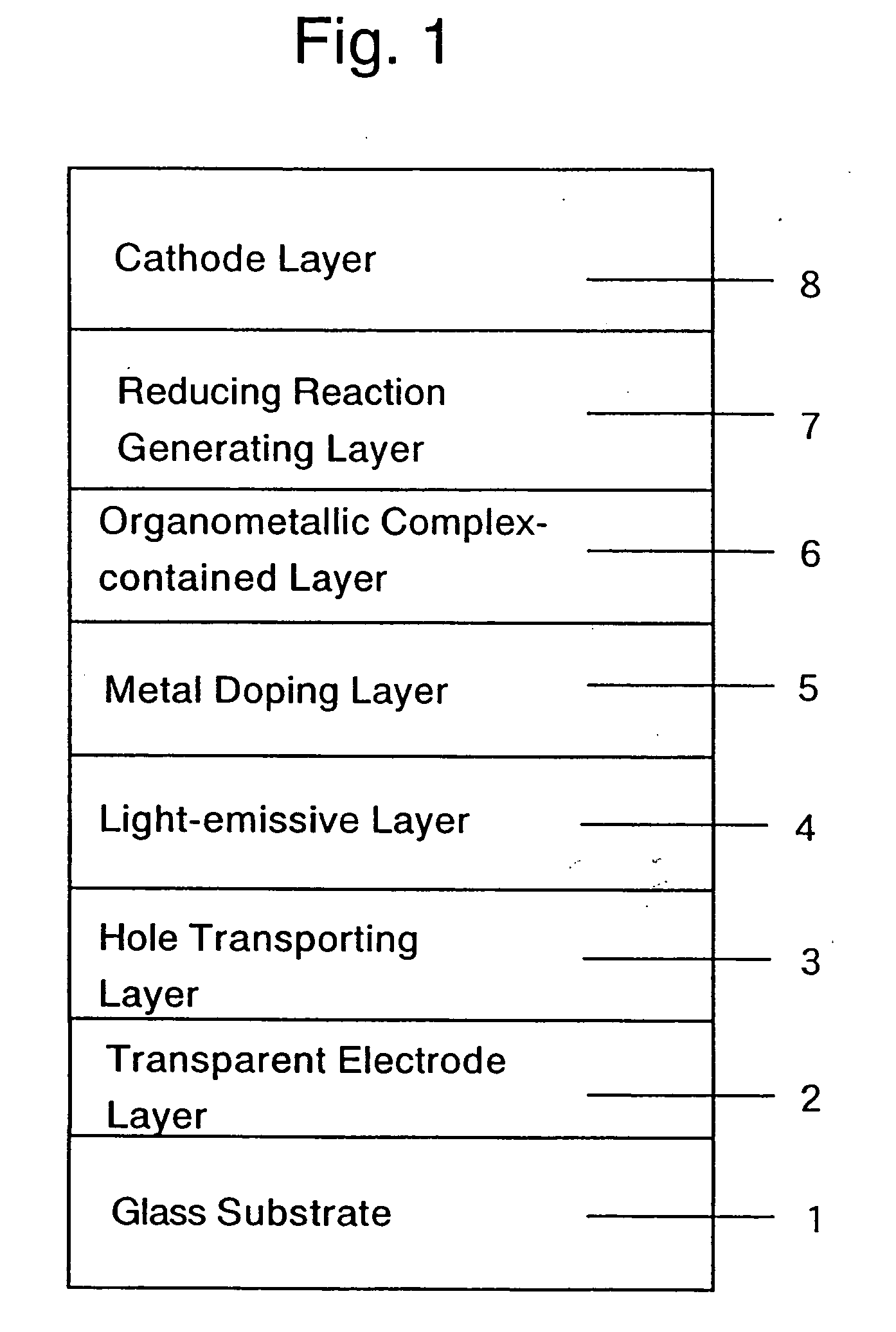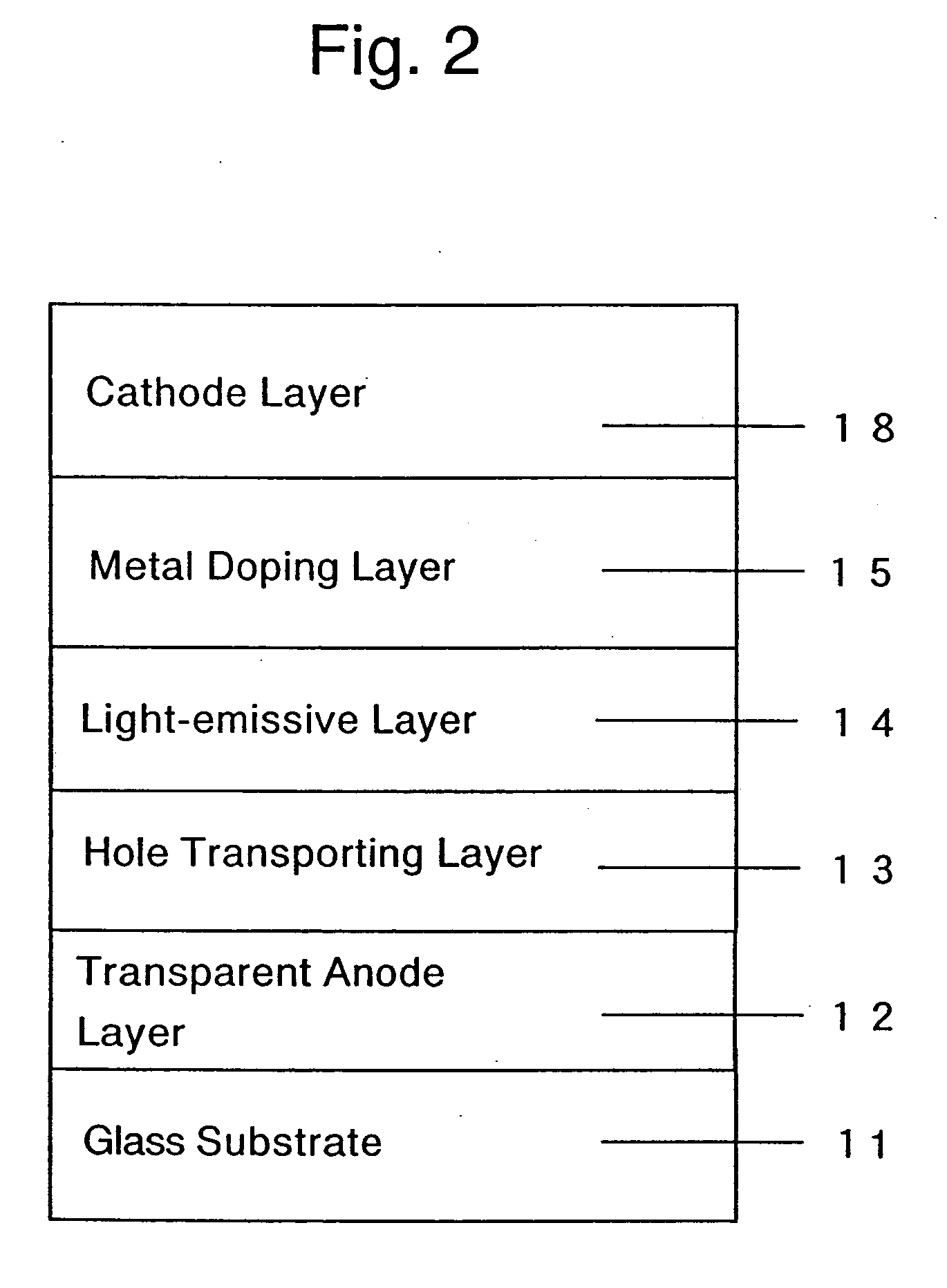Organic electroluminescent device and production process thereof
a technology of electroluminescent devices and electroluminescent devices, which is applied in the direction of luminescnet screens, discharge tubes, instruments, etc., can solve the problems of inability to select the electrode material for the alloy-based electrode, inability to oxidize and stabilize magnesium, and inability to meet the requirements of the application of the electrode, etc., to achieve the effect of stable device properties, reducing the driving stability of the el device, and increasing the driving voltag
- Summary
- Abstract
- Description
- Claims
- Application Information
AI Technical Summary
Benefits of technology
Problems solved by technology
Method used
Image
Examples
reference example 1
[0079] Reference Example 1 is intended to explain the production of the prior art organic EL device, described in Japanese Unexamined Patent Publication (Kokai) No. 10-270171, in which the low resistance electron-transporting layer (metal doping layer) is in contact with the cathode layer and can also act as an electron injection layer. The EL device produced in this reference example is the organic EL device having the lamination structure of FIG. 2, and it includes a glass substrate 11 having coated thereon an ITO (indium-tin oxide, product on Nippon Sheet Glass Co., Ltd.) having a sheet resistance of about 10 Ω / □ as a transparent anode electrode 12. Alpha(α)-NPD having a hole transporting property, represented by the following formula:
is deposited onto the ITO-coated glass substrate 11 under vacuum of about 10−6 Torr (1 Torr≈133.32 Pa) and at the deposition rate of about 2 Å / sec to form a hole transporting layer 13 having a thickness of about 500 Å. Next, an aluminum complex o...
reference example 2
[0082] Reference Example 2 is intended to explain the production of the prior art organic EL device, described in Japanese Unexamined Patent Publication (Kokai) No. 11-233262, in which the low resistance electron-transporting layer (metal doping layer) is omitted from the device and the reducing reaction generating layer (e) can act as an electron injection layer.
[0083] The EL device produced in this reference example is a organic EL device having the lamination structure of FIG. 7, in which a transparent anode electrode 22 and a hole transporting layer 23 are deposited on a glass substrate 21 under the same conditions as those applied in Reference Example 1. Subsequently, the above-described Alq is deposited to form a light- emissive layer 24 having a thickness of about 700 Å.
[0084] An organometallic complex compound containing lithium (alkaline metal) ions, i.e., mono(8-quinolinato) lithium complex (hereinafter, briefly referred to as “Liq”) represented by the following formula:...
example 1
[0086] Example 1 illustrates the production of the organic EL device, according to the present invention, in which the organometallic complex-contained layer is formed only from an organometallic complex. The organic EL device having the lamination structure of FIG. 8 is produced as follows. On a glass substrate 31, a transparent anode electrode 32, a hole transporting layer 33, a light- emissive layer 34 and a metal doping layer (low resistance electron-transporting layer, i.e., co-deposition layer of BCP and Cs) 35 are deposited in sequence under the deposition conditions similar to those applied in Reference Example 1. Thereafter, as in Reference Example 2, Liq is deposited to form an organometallic complex-contained layer 36 having a thickness of about 25 Å. Finally, an aluminum (Al; work function of 4.2 eV) which is a thermally reducible metal capable of reducing a metal ion (Li+) in the Liq in a vacuum to the corresponding metal (Li) is deposited at a deposition rate of about ...
PUM
| Property | Measurement | Unit |
|---|---|---|
| Thickness | aaaaa | aaaaa |
| Energy | aaaaa | aaaaa |
| Electrical resistivity | aaaaa | aaaaa |
Abstract
Description
Claims
Application Information
 Login to View More
Login to View More - R&D
- Intellectual Property
- Life Sciences
- Materials
- Tech Scout
- Unparalleled Data Quality
- Higher Quality Content
- 60% Fewer Hallucinations
Browse by: Latest US Patents, China's latest patents, Technical Efficacy Thesaurus, Application Domain, Technology Topic, Popular Technical Reports.
© 2025 PatSnap. All rights reserved.Legal|Privacy policy|Modern Slavery Act Transparency Statement|Sitemap|About US| Contact US: help@patsnap.com



